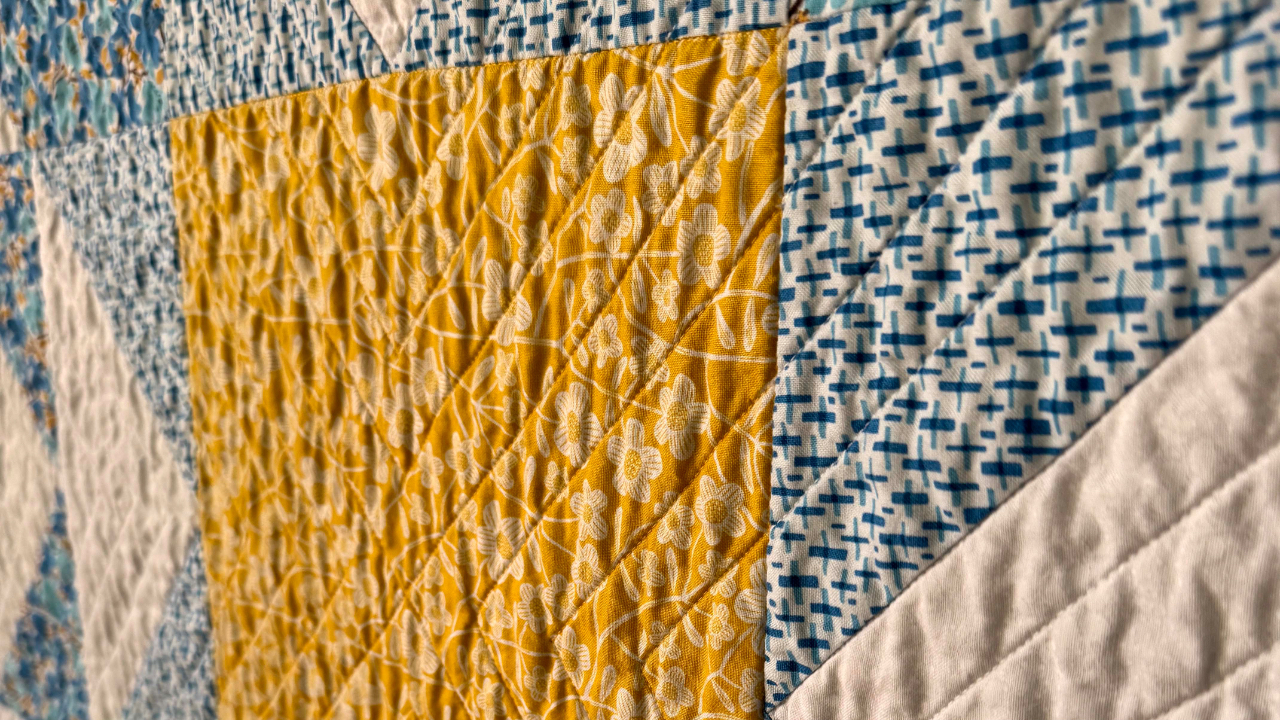
Have you ever made a block only to have it come out wonky or too small? When this happens, people generally start to make sure they cut the fabric the right sizes and that their seam allowance is a perfect 1/4 inch. Most of the time, though, the problem is in the press. Today we're going to talk about the difference between ironing and pressing and why it's important to know when to do which. This is my current pressing station, though I do have grand ideas of getting an oversized ironing board.

Ironing & Pressing Defined
Ironing is what you do to remove wrinkles from fabric by running a hot iron back and forth over it. You might use steam to really get into the fabric for tougher wrinkles.
Pressing is lifting the iron straight up and down on a specific part of a project, like a seam, to give it a crisp finish.
Tools for Successful Pressing
A sturdy ironing board is essential to good pressing. If you're converting a surface into an ironing station, make sure you get heat resistant fabric to cover it. I absolutely love my cordless Panasonic iron. Even at its highest heat setting, it's not scorching or stretching my fabric. I was starting to feel like I had ironing board covers on "subscribe and save" at Amazon because of the concentrated heat just at the end where I press. That's when I started using a wool pressing mat. It has the added benefit of bringing a little extra crispness to my seams. A tailor's clapper is a block of wood you set on your seam immediately after pressing it to keep the heat in. It's especially helpful on bulky or trickier seams.

Helpful Pressing Tips
Here are my best tips to make sure your pressing is a success:
- Let the weight of the iron do the work; you don't need to actually press down.
- Wherever you can, press with the grain. Pressing on the bias could lead to stretching or warping.
- Match the fabric content to the iron temperature setting. Cotton is good with high heat, but start at medium and work your way up until you find a setting you like.
- Protect your iron plate by not pressing over pins.
- Press each seam before crossing with another seam.
- Practice pressing with scraps to find a temperature and a rhythm that works for you.
- Press the seam closed to "set" it. This sinks the thread into the fabric. (See pic below.)

Steam or No Steam
This can get hotly debated in some quilting circles. At the end of the day, whether or not to use steam is a personal preference. Some people are confident steam won't distort their fabric and use it. Others are more cautious and don't. I find a good middle ground is to have a spray bottle nearby so you can spot steam where pressing is trickier. The one I have sprays the water in a fine mist, and I love it for when I need a little steam boost. If you're also using a wool pressing mat, be prepared for a bit of a musty smell if you use steam or a water bottle. Don't worry, it's not permanent!

So now you should be ready to press like a pro and make sure your quilt blocks are square and sized right. Good luck!

This post includes affiliate links. While you pay nothing extra, I earn a small commission to add to the fabric budget!






